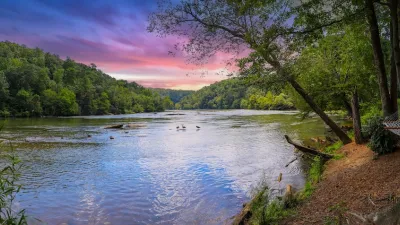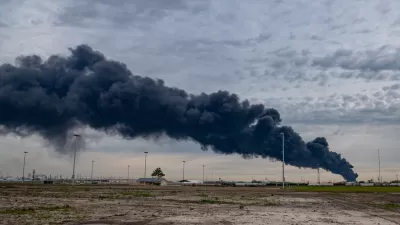Many environmental groups argue the EPA's proposed plan, which is less stringent than California's regulations, doesn't go far enough to support electrification and reduce GHG emissions.

Alex Wigglesworth, Anumita Kaur, Thomas Curwen report on a proposed rule from the Environmental Protection Agency (EPA) that aims to reduce emissions. "The draft rule proposed by the Environmental Protection Agency, which would take effect in model year 2027, would reduce emissions of g nitrogen oxides from gasoline and diesel engines by as much as 60% in 2045, the agency said."
"The proposed rule change was modeled after smog-curbing regulations already adopted by the state of California, although the federal requirements would be less stringent. Many air quality advocates said the rule doesn’t go far enough," according to the article. Environmentalists argue the EPA should more aggressively pursue electrification of heavy-duty trucks, which emit harmful pollution along freight corridors, many of them adjacent to low-income communities. "Although heavy-duty diesel trucks make up just a tiny fraction of vehicles on the road, they produce more than half the on-road pollution in California, said Will Barrett, national senior director for clean air advocacy for the American Lung Assn."
For its part, "California in 2020 passed a rule limiting truck emissions to no more than 0.05 gram of nitrogen oxide pollution per brake-horsepower hour by 2024 and to 0.02 gram by 2027," a goal more ambitious than the EPA's proposal.
The article details other steps California has taken to reduce emissions and improve air quality, as well as the pushback from some in the trucking industry. The EPA will choose one of several options to finalize the plan by the end of this year as "the first step in a series of regulations the EPA will develop over the next three years to reduce pollution from trucks and buses."
FULL STORY: Biden’s EPA proposes new rule to reduce smog from trucks and other heavy vehicles

Planetizen Federal Action Tracker
A weekly monitor of how Trump’s orders and actions are impacting planners and planning in America.

Maui's Vacation Rental Debate Turns Ugly
Verbal attacks, misinformation campaigns and fistfights plague a high-stakes debate to convert thousands of vacation rentals into long-term housing.

San Francisco Suspends Traffic Calming Amidst Record Deaths
Citing “a challenging fiscal landscape,” the city will cease the program on the heels of 42 traffic deaths, including 24 pedestrians.

Amtrak Rolls Out New Orleans to Alabama “Mardi Gras” Train
The new service will operate morning and evening departures between Mobile and New Orleans.

The Subversive Car-Free Guide to Trump's Great American Road Trip
Car-free ways to access Chicagoland’s best tourist attractions.

San Antonio and Austin are Fusing Into one Massive Megaregion
The region spanning the two central Texas cities is growing fast, posing challenges for local infrastructure and water supplies.
Urban Design for Planners 1: Software Tools
This six-course series explores essential urban design concepts using open source software and equips planners with the tools they need to participate fully in the urban design process.
Planning for Universal Design
Learn the tools for implementing Universal Design in planning regulations.
Heyer Gruel & Associates PA
JM Goldson LLC
Custer County Colorado
City of Camden Redevelopment Agency
City of Astoria
Transportation Research & Education Center (TREC) at Portland State University
Jefferson Parish Government
Camden Redevelopment Agency
City of Claremont





























